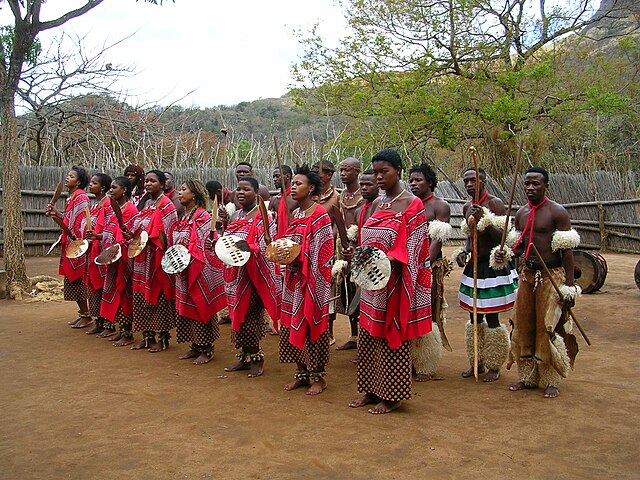Top Qs
Timeline
Chat
Perspective
Demographics of Eswatini
From Wikipedia, the free encyclopedia
Remove ads
Demographic features of the population of Eswatini include population density, ethnicity, education level, health of the populace, economic status, religious affiliations and other aspects of the population.
The majority of Eswatini's population is ethnic Swazi, mixed with a small number of Zulus and white Africans, predominantly of British and Afrikaner origin. This population also includes a small segment within it that is mixed with any number of these ancestries.
Traditionally Swazis have been subsistence farmers and herders, but most now work in the growing urban formal economy and in government. Some Swazis work in the mines in South Africa. Eswatini also received Portuguese settlers and black refugees from Mozambique. Christianity in Eswatini is sometimes mixed with traditional beliefs and practices. Most Swazis ascribe a special spiritual role to the Swazi Royal Family.
The country's official languages are Siswati (a language related to Zulu) and English. Government and commercial business is conducted mainly in English. Asians, Afrikaners, Portuguese, and black Mozambicans speak their own languages.
Remove ads
Population
Summarize
Perspective

Eswatini's population is 1,113,276 according to the July 2021 estimate from the CIA World Factbook. The 2007 Census put the nation's population at 912,229. This number is lower than the 1997 Census, which gave 929,718 residents. The small difference is believed to be the result of massive emigration of Swazis to South Africa in search of work.[1]
According to the 2010 revision of the World Population Prospects the total population was 1,186,000 in 2010, compared to only 273,000 in 1950. The proportion of children below the age of 15 in 2010 was 38.4%, 58.2% was between 15 and 65 years of age, while 3.4% was 65 years or older .[2]
Population by Sex and Age Group (Census 29.IV.2017): [3]
Remove ads
Vital statistics
Summarize
Perspective
Registration of vital events in Eswatini is not complete. The Population Department of the United Nations prepared the following estimates. [2]
Demographic and Health Surveys
Total Fertility Rate (TFR) (Wanted Fertility Rate) and Crude Birth Rate (CBR):[4]
Life expectancy at birth
Life expectancy from 1950 to 2015 (UN World Population Prospects):[5]
Remove ads
Ethnic groups

Languages
Religion
- Christian 90% (Zionist – a blend of Christianity and indigenous ancestral worship – 40%, Roman Catholic 20%, other 30% – includes Anglican, Methodist, Church of Jesus Christ, Jehovah's Witness), Muslim 2%, other 8% (includes Baha'i, Buddhist, Hindu, indigenous, Jewish) (2015 est.)
See also
Wikiwand - on
Seamless Wikipedia browsing. On steroids.
Remove ads

